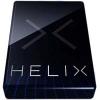Leaderboard
Popular Content
Showing content with the highest reputation on 07/23/2020 in all areas
-
I was just looking at the guitars hanging on my wall. They include a modified JTV-69s (new neck, new pickups), a ‘67 Les Paul, a very nice Tele, a ‘92 Strat Deluxe with the same pickups as the JTI-69S, Amalfitano SVL Daytona and a very nice black Epiphone Sheraton-II Pro. With all those guitars, the one I pickup the most is the JTV-69s, and (until recently) was the one that got the most gig time, by far. So I thought about the reasons: The neck I added with stainless steel frets is the best fo the bunch, with the Strat Deluxe a close 2nd with the same frets Those SVL Dyatona pickups are pretty nice its the lightest of the bunch I use the models a lot, even gigging There’s no noise with the VDI cable The models don’t sound nearly as good as the real thing, but they’re a lot closer than a guitar you don’t have in a mix or live gig. The only issue I have is that the JTV-69s doesn’t have the sustain of the other guitars. In fact, I find the sustain through the VDI cable isn’t is good as through the 1/4” direct cable for the magnetic pickups. The A2D conversion In the guitar seems to loose a little while eliminating the noise. So anyway, I think its interesting that of all those guitars, the Variax is the one that tends to get the most use, but isn’t the one that gets the most appeal.1 point
-
Hi, I just wanted to post a thread that explains the actual reason why FRFR, PA, and studio monitor speakers typically still require treble cut to avoid sounding fizzy with distortion or overdrive on a guitar tone. THE COMMON PROBLEM I've read through some of the threads on this topic, and while I saw one person post the correct explanation (Without getting the credit or kudos he deserved for it, from what I saw), most people state the problem is that the user is not understanding the difference between guitar speakers and FRFR speakers. I believe users aren't that naive - and many good comparisons exist where users get great sound from helix (without virtual cab) into power amp into real cab, or other ... simpler..... modeller brand (with only virtual cab) directly into FRFR. However most of those "it's simple - guitar speakers have less treble, so you need to cut treble on FRFR" explanations go on to incorrectly state that the problem is that guitar cabs cut the treble a lot because they aren't flat, where as FRFR speakers are, at least in theory, outputting a flat response - therefore putting out much more volume at high frequencies than guitar cabs do. I mean, yes, that is true ... but NO that is not the problem. Again, the scenario is that we ALREADY have a virtual cab or IR in our signal chain - so shouldn't the high frequencies already be cut? Shouldn't the FRFR speaker just output exactly what that virtual cab sounds like, with the already good sounding treble cut baked into the virtual cab since it's a copy of a real cab??? (The end user, and you here, are asking this.... :-) ) Folks state that you need to think like a recording or mixing engineer, not like a guitarist - which is absolutely correct. But stating that with FRFR speakers you need to cut treble because it is brighter than a guitar cab is not logical, nor correct, since the scenarios being discussed invariably have either a virtual guitar cab already in the signal chain, or a cab IR. Since we have a virtual cab in a block, we already HAVE that high cut, so the statement is not correct - not in the simple way most folks tell it on this forum, at least. There is more to it.... The common problem from nearly everybody using a helix is with the end users who are experiencing fizz through FRFR, and questioning why, considering they are using a virtual cab or cab IR which is emulating the sound of the cab. WHAT A VIRTUAL CAB OR IR IS ACTUALLY REPRODUCING The simple description of the problem is that it's NOT emulating the sound of the cab FROM a position that a guitarist would be playing and listening to the tone. The facts of why the virtual cab, or many of the cab IRs available, are NOT sufficient to sound like a cab in a room are with how the virtual cab or cab IR were miked up: - In a virtual cab, and in many cab IRS, the cab was, more or less, close miked, in one mix position, on one part of one cone. That is how many cabs are miked in the studio and live... but is NOT how you get the sound you hear as a guitarist when playing through your amp. IT IS a MUCH brighter tone, and much LESS COMPLEX than the sound of a real cab in a room. The virtual cabs or many of the cab IRs are miked this way for various reasons - technical reasons (CAB IR files aren't really designed to handle the long recording of room reflections and short plate reverb that your cab in a room would require)..... and removing early reflections as much as possible by close miking in a dead room allows you, the player, to configure the rest of the tone after the close miked speaker on the cab - you can eq to mimick various rooms, you can add room or plate verb for the same reason.... etc. You might think... "Ok, so because the guitar cab is close miked, it is much brighter and fizzier, right? like how if I put my ear to it and play quietly with a distortion pedal, it sounds bad.... that's your point? So Why can't I just put my FRFR speaker where my guitar cab would normally go and play and have it sound the same, since it's playing back the exact sound of a guitar speaker in that location, and the room and angle should take care of everything else?" Well, folks, that is an EXCELLENT grasp on the close miked speaker sound, yes it's much brighter and fizzier, but it is missing a couple of important points about the "amp in the room" sound when playing through an FRFR or PA. 1) the FRFR or PA probably has FAR better high frequency dispersion than your guitar speaker, up high, and you always hear the on axis tone (IE: the virtual cab sounds like a close miked speaker, so you get that sound everwhere in front of the FRFR without it changing with direction or distance in the way a real guitar cab does). So where every you stand, relative to your FRFR speaker, it's like having your guitar cab aimed right at, and next to, your ears. 2) the close miked virtual cab response or IR response is on one part of the cone and miked from one direction... it is one aspect of the tone. Dust cap, edge, OR middle of cone, on axis OR off axis, at a specific distance. 3) No matter how bright each guitar speaker on it's own sounds, in a cab with more than one speaker there remains much less high frequency sound once you're a certain distance away from it - due to physics of how multiple speaker outputs work together for dispersion, etc. The real sound from the cab as you hear it is a mix of many radically different tones coming from various parts of the guitar speaker. Guitar speakers are not rigid cones, normally, and the dust cap, edge, middle of the cone, and other areas can truly sound quite different, as can on axis versus off axis tones. This is why some of the best CAB IR libraries include multi miked files... it's sort of a pre-mixed cab IR that actually sound sound much more like the blend you get from a real cab when you play back through an FRFR or PA. A guitar cab with more than one speaker is extra difficult to reproduce when single miked as a cab IR or virtual cab - because the tone in the room is a wild, chaotic mix of the multitude of EQs and tones you get from the cab, all interestingly blended together. So, a MIX engineer in a studio will be accustomed to taking that fizzy close miked amp recording and EQing it accordingly to make it sound great through studio monitors, which are truly FRFR (and likely the only TRULY FRFR speakers you will ever encounter, since they are typically EQed to be as neutral, or flat as possible, in that control room. AT least ONE set of their monitors should be like that, anyhow, in a big studio. They probably mix on something like NS7s though, or other similarly bright and revealing speakers, which also reminds the engineer to cut back on high frequencies and remove the fizz. So yes, think like an engineer, but for the right reasons, and with a little tiny bit more of the full picture than you had before. Saying that guitar cabs aren't as bright as FRFR as a reason to cut treble is simply wrong, since we all know we're placing a virtual guitar cab that, one would ASSUME, must have that same high cut in our signal path. It's actually because our virtual cabs, and some cab IRs, contain much more high frequencies than you actually hear from the real cab when standing and playing... and an FRFR or PA speaker will not result in the same high cut in a room as the actual cab would, due to physical design differences between the transducers and the layout of the speakers. Basically, the original cab IR or virtual cab was probably not setup as a mic in a room standing where a guitarist stands while playing.... it is probably a MUCH brighter recording that isn't anything like how you normally hear your cab... but is great for a studio MIX engineer to work with. SO YOU STILL NEED TREBLE CUT, EVEN WITH A VIRTUAL CAB, or with MANY IRs (but maybe not all IRs) Rest assured - if you have a virtual cab, you still need treble cut (at the very least) after a helix virtual cab or many of the cab IRs you can buy to sound anything like a real cab when you connect your helix directly to a TRUE FRFR cab or to a PA... and honestly you probably need a bit of plate reverb and possibly some low end cut also to really get you there. But what DOES a virtual cab or cab IR do for you? it gets you the true EQ of that cab, in a common, popular recorded microphone position for studio use. Just cut 8kHz, more or less, and up from there, ... probably rather dramatically, and it will start to sound similar to a good cab.....but use your ears, choose eq how you like it. Or, look for an IR library that is a producer blend of mic positions and /or room sound in one cab IR - and you will probably find that you love that sound. Another minor footnote - FRFR cabs you can buy for modelers are not particularly flat response or full range, but they are MUCH more so than most guitar cabs. A PA is often hotter in the highs than a real FRFR speaker is. A REAL FRFR can likely only be found in some recording studios, and even then might not be the speakers chosen by the engineer to work with... for reasons I won't get into here.1 point
-
Eventually a suitable Variax at a reasonable price appeared on UK eBay, & it's now plugged into my Helix. Not the JTV-59 I'd originally intended, but having had a quick tour I'm very happy with my Variax Standard & look forward to further explorations. :) As for new ones, still no sign of them so far as I can see, but that has become irrelevant...1 point
-
Yes, that’s it... I just didn’t put much effort into looking for it.1 point
-
There was a PDF I saw before that showed the response curves for the various Cable Tone settings. It’s basically a low pass filter. The longer the cable, the lower frequency setting.1 point
-
I've tried, intentionally, to create phasing problems with the stock Helix cabs, and in my tests never was able to. I used same cab, different cabs, same mic, different mic, and varied the distance offset between the two mics in all of those cases, with the final signal being summed back to mono, and couldn't create anything that sounded like phase cancellation. If the Line 6 cabs really are IR based, like some claim, then they are probably MPT IRs, in my opinion.1 point
-
Apparently there doesn't seem to be any problem with the stock cabs. I know Jason Sadites uses dual stock cabs in almost all of his YouTube videos and has never mentioned any phasing problems. In my experience the most common phasing issues involve combining IRs, particularly ones from different manufacturers. Although some manufacturers like Redwirez specifically state they build all their IRs to ensure there are no phasing problems when combined and mixed together.1 point
-
Does this problem really happen when using multiple mics in a Helix dual cab block? If the mics in Helix are all "simulated" at cab center (or anyways at the same position) I guess there should be no phase issues. I combined dual mics in the dual cab block with variable results, but never had the impression of having phase issues.1 point
-
Well said, sir! The resulting EFFECT, though, is that the outer edge is darker sounding, on any speaker, whether your first assumption is correct (which it actually is, in some designs), or the speaker engineer's description is correct (which is true of other designs, no doubt those he worked with and sold). BUT, the speaker engineer's statement isn't entirely true, at least not of all speaker designs. Guitar speakers and full range single cone speakers as well as speakers for some other purposes, SOME of them at least, are actually designed to have the cone flex in certain ways depending on the vibrating frequency, so the inside of the speaker handles the high frequencies more (less mass allowing it to vibrate faster for higher frequencies more easily, less surface area which is ok for high frequencies which require less surface area for what we consider to be the same output level as the bass), while the outer part of the cone vibrates as a piston with the inside at lower frequencies, adding support for the low frequency output. There are plenty of speakers (not musical instrument speakers, generally, but hifi or similar styles) that try to be piston like over the entire surface - entirely rigid, in other words... but it isn't always the best choice. So yes you are right, but you were also right in your initial assumptions too, and the person from the top speaker company may have been speaking specifically about designs of his company's manufacture. He is correct, in many cases, but not ALL cases. Take also, for example, the "whizzer cone".... why does that work? Why does adding an extra small rigid cone on the voice coil instead of just a dust cap make more treble come out of the speaker? Taking the speaker engineer's statement as always true, it wouldn't make any differende to add the whizzer cone, since the whizzer cone and the other cone, both attached to same voice coil, would still just work as pistons together, and it would simply be the listening, or miking, position on the overall moving surface that affects how much treble you get due to the reasons he specified. However, it isn't true, in this case. A whizzer cone makes DRAMATICALLY more output in the treble for a given speaker, assuming the entire speaker was designed with the whizzer cone in mind. Because the cone of the speaker (in that design) is slightly flexible, and the entire surface area of the cone doesn't move as a piston at all frequencies, but only below a certain range (probably roughly 6k or 8kHz or something, just a wild guess, for sake of conversation).... but the whizzer cone, which is attached directly to the voice coil also, is fully rigid, light, and very efficient at high frequency output... Well this basically makes the whizzer cone into a tweeter, with a heck of a lot of mass on the voice coil compared to a real, dedicated tweeter (hence why it's not a particularly great tweeter, but better than nothin'!).... and makes the dual cone speaker (ss this design with whizzer cone is commonly known) work as a much better full frequency range speaker than it would without the whizzer cone. Speaker technology isn't all identical :-) My studio reference playback monitors have polypropylene woofers and midranges... with limited range on each because poly is a pretty rigid surface compared to treated pulp paper cones, and also heavier than paper. The highs just don't come out, so it has to be a 3 way speaker to cover everything (tweeter does highs, midrange does mids, woofer does lows, and the woofer and midrange sound truly horrible if operated above their designed frequency range, so it has a high ratio crossover network to ensure it all works perfectly. And it sounds incredible....)1 point
-
1 point
-
Ok, now let's throw Powercab into the mix (no pun intended). Powercab is a key part of the Line6 ecosystem, and how it fits into this discussion may be why. Powercab has a number of options for getting amp in the room tone that might be better than Helix through a traditional FRFR like a PA speaker or monitor. The first option is Flat, LF Raw. This like a guitar cabinet in the room because that's exactly what it is. LF Raw is just the Powercab speaker, no tweeter, no mic model, no processing of any kind. And that speaker is a guitar speaker. Powercab speaker model takes this a step further by using EQ profiles to tailor the LF Flat equalized mode to model different speakers, but still no mic model. I don't know the details of how this is done, but I suspect LF Flat is an EQ applied to the actual speaker used in Powercab to establish a normalized platform for adding the EQ for the different speaker models. That way Powercab could eventually use a different speaker, change the LF Flat EQ, and all the EQ profiles for the other speaker models would work without change. So LF Raw and Speaker modes using Powercab as a traditional backline is going to sound and feel a lot like a regular guitar amp. That's because it mostly is. The speaker is going to behave, and have the same dispersion characteristics as any other 1x12 or 2x12 ported guitar cabinet. But Powercab in User IR mode, or in Flat FRFR mode with IRs or cab models in Helix, is still going to sound more like an amp in the room, and behave more like a traditional guitar amp backline than a PA speaker. The reason is the use of coaxial speakers. The coaxial speaker in Powercab is a guitar speaker with a hole in the middle of the magnet. A tweeter horn driver is screwed into this hole to cover the high frequencies which some out through the center of the woofer. The reason this is going to feel and sound more like a guitar amp is because of the dispersion characteristics of a coaxial speaker. Because the high frequencies are coming through a hole in the middle of the speaker, they will be more focused and direct than a typical horn loaded configuration designed to increase dispersion. So the off-axis taming of FRFR high end will still happen somewhat naturally with Powercab, even in FRFR mode. In this case, a challenging characteristic of coaxial speakers is actually helpful! So a Powercab might be a nice way to deal with overly bright FRFR tones that don't feel like amp in the room, because they're not.1 point
-
After assigning both FX to the same switch, manually turn one off and one on. Then Save the preset in that state. Henceforth the switch will toggle between the two states, with one FX alternately on and the other off.1 point
-
Although there are some things I would have preferred be done with different hardware such as the joystick, in toto(not the dog) I cannot believe what a well built piece of equipment the Helix is. It is absolutely awe-inspiring from the quality of the case to the screen and scribble strips, even the rough pebble coating on the incredibly solid expression pedal. Almost everything about it feels robust and fantastic. What a remarkable piece of kit. It is a beast! As I posted before I only wish I could upgrade the components when the time comes because it is one truly impressive piece of gear that I would prefer never become obsolete. For anyone waiting I would say get off the fence and just get one!! I'm sure the "Double Helix", whenever it comes, and it could be years, will have more capability but with the build and quality of the Helix as it exists already the new Double Helix will be hard-pressed to deliver at the current price point as materials and manufacturing continue to get more expensive. This device has captured my intense interest, served me flawlessly for years of gigging, and cured my lifelong G.A.S.. I have said this before but I truly believe it has saved me bundles of cash over the years. My constant purchase and search for other equipment decreased dramatically after getting the Helix. In the long run it has saved me thousands, so if you are just looking at the economics of it you may be surprised at how your lowered net expenditures on other gear may end up more than justifying the purchase. Even if you decide to sell your LT for less than the purchase price when a new device comes out to displace it, you may well find that you have saved a lot of money on other gear you would have bought otherwise. In the interim you will definitely have missed out on just how much fun and creativity this device delivers, especially when integrated with a Variax and/or PowerCab, delivered with an intuitive interface that makes using it a pleasure. With a major firmware upgrade coming(3.0) it will soon have even more toys and functionality under the hood. I am not shy about critiquing things I think could be done better on the Helix but overall the experience has been overwhelmingly positive.1 point
-
Let me throw a monkey wrench in. Every band I have toured with over the decades wouldn't even ALLOW an amp to be shooting out into the crowd. So my various amps were always side stage mic'ed up and coming back at me through a monitor mix. My monitor mix was always flat at the monitor board (no cuts). Just an SM-57 right up on the speaker of the cab about midway between the cone and edge. And then blowing back at me through my old EV monitor with a 15" and a horn. Always sounded golden. Pretty much exactly like what was coming out of my 4x12. In the studio...same thing. I mic'ed it up. Set it flat. Never cut highs and always tried to achieve a tone that didn't require low cuts either (I go for a real mid "Woody" sound in my high gain for warmth and roundness). So...I have always run my rig like that...mic'ed up and flat eq on the board. Never had to cut highs. So how is that explained in all of this "fizzy" debate? By the way...I'm using an Ownhammer 4x12 IR with all my sounds in my HX Stomp. Never been a fan of using tons of different cabs. I like to keep my sound consistent. And I am not using any high or low cuts. No fizz, no problems. Just the way it's supposed to be. :)1 point
-
YES! ...not to mention the fact that the product is continuously improved and updated. If you got one in the early days, as I did, you are looking at MAJOR changes, and new features and models that (at least in my case) are enabling me to make music now I couldn't when it first came out. Honestly those folks who don't understand that humans are part of the cost of great stuff are just annoying though. They are the same people who think all software should be free so they justify pirating it.1 point
-
Gents, I had the exact same problem and saw your post yesterday. While waiting for someone to reply, I ended up resolving it myself. I can't say this is the ONLY solution, but I was able to connect my Helix and eventually get past with the update mode through Line 6 Updater. Unlike doing it through HX Edit, Line 6 Updater recognized my Helix without any "connection interrupted" messages, and I let it run through the update successfully. I think it's a bit silly that Line6 website makes a big deal out of people needing to follow the instructions carefully - yet I haven't seen any official post on this simple troubleshooting to save people's time and frustration. I hope this works for you, too.1 point
-
My only thought is that - rather than replacing the HELIX Floor in their lineup they might be considering a "Pro-on-steroids" or "Plus" model considerably more expensive than current HELIX Floor - and which incorporates for example proper multi-track looper ( with loop lengths in the 10 minutes region instead of around 1 minute ) , SDHXC card slot for looping and backing track playback... , etc etc etc... and price it just below £2000. so both the original and this sit in their place price-point wise in the ecosystem... Maybe the added DSP power could go towards an even higher A/D and internal sample-rate ( 384kHz ?... - ) in order to render ANY latency totally negligible ( are you listening Steve Vai? ) and might allow even more accurate speaker-interaction modelling etc without sacrificing blocks. Some of this could then optimally also find its way into existing HELIXES but at the expense of reduced block counts - Maybe the unit could also introduce guitar modelling similar to some stomp boxes now coming out - So maybe adding for first time a touch screen for example , And a few extra knobs to directly adjust USB 1/2 output levels etc etc.. And maybe more stomps and (COLOUR) scribble strips ?? ( I WANT MORE ..... BABY ! )1 point
-
The hardware has the capability to be upgraded (via software) as long as the DSP chips have capacity. The current modeling is light years ahead of even the PODHD stuff, which was quite good in itself. I don't think the hardware is the limiting factor of development just yet. As far as things like touchscreens or physical knob interface, it shouldn't really effect base functionality. At this point, beyond adding more amps, the only thing left is allowing custom models. I mean, being able to assemble your own amp, picking what tubes are in what spots (V1 is a 12AX7, V2 a 12AU7, etc...) EL84/6L6, how many, what wattage, output transformer type....etc. Also putting different speaker models in different cabinets, and also mic position between center and edge of speaker cone. These are the type of things that I can see being a welcome addition to the Helix. I don't see any of these features necessitating new hardware. This all seems like a great big beta test of hardware in the last few years. You had HD500X with the improved POD HD modelling, and mulit (dual) paths, and there's the Firehawk FX(which also uses PODHD) with built-in Bluetooth, but single path. The Firehawk FX interface is eerily similar to the Helix, which is why it was such an easy jump for me (from FHFX to Helix LT). Maybe these technologies will all roll into a great package, hopefully for no more cost of current generation of hardware and the current hardware is discounted some. I say this because the hardware development costs should have recovered, based on most business cases of 2-yr ROI. Why spend the money when you won't make any? Helix released in 2015. I would say they have made their money back plus some to be profitable (they don't do this for free). Helix LT is in a similar situation, released in 2017, with minimal costs as most of the internals are just a derivative of the original. The hardware development of the Bluetooth functionality was tested and proven with the Firehawk FX/Amplifi platform. Thoughts, anyone?1 point
This leaderboard is set to Indiana - Indianapolis/GMT-04:00






